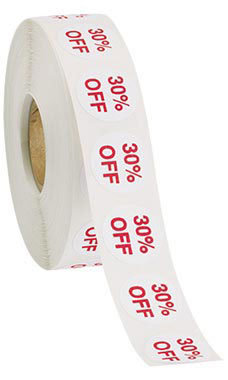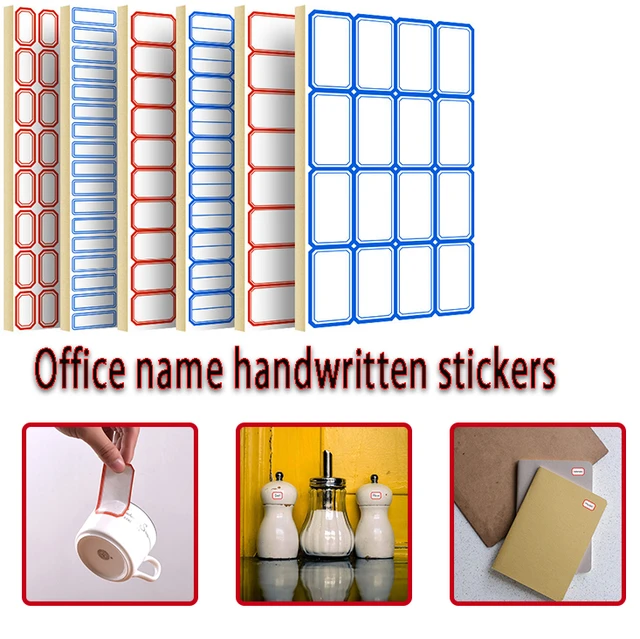Crucial Tips for Applying Self-Adhesive Labels Seamlessly
Crucial Tips for Applying Self-Adhesive Labels Seamlessly
Blog Article
Choosing the Right Self-Adhesive Labels for Your Company and Individual Demands
Selecting the ideal self-adhesive labels for both company and personal applications calls for a nuanced understanding of numerous elements that affect their efficiency. As we discover these critical aspects, it ends up being clear that a calculated strategy is necessary to ensure your tags not only fulfill assumptions however additionally enhance your general branding and company efforts.

Recognizing Tag Materials
When picking self-adhesive tags, understanding the numerous label products is critical to making sure ideal efficiency and resilience. The option of material directly affects the label's look, capability, and longevity. Usual tag materials consist of paper, plastic, polypropylene, and polyester, each offering distinct advantages and disadvantages.

Polyester tags use premium toughness, being immune to tearing, moisture, and UV light. This makes them an outstanding selection for industrial applications or items that require long-lasting labeling solutions (Self-Adhesive Labels). Polypropylene, while similar to polyester, is commonly less costly and provides a good balance of toughness and print top quality
In addition, consider sticky types-- irreversible, detachable, or repositionable-- depending upon your details demands. Ultimately, selecting the right label product is essential for achieving the wanted end result, making sure that your tags execute properly in their desired environments.
Determining the Right Size
Picking the suitable size for self-adhesive tags is a basic action that complements the choice of label materials. The size of a tag can dramatically impact its functionality, presence, and overall influence. It is necessary to take into consideration the designated usage of the label when identifying its dimensions.
To start with, examine the information that requires to be displayed. Tags including more text or graphics will certainly call for bigger measurements to guarantee readability and aesthetic allure. On the other hand, minimalist layouts might gain from smaller sized labels that maintain a smooth visual.
Furthermore, take into consideration the surface on which the tag will be applied. Different surfaces, such as bottles, boxes, or envelopes, may dictate particular size demands to make the most of attachment and visibility.
Moreover, think of the quantity of tags needed; larger tags might be extra cost-efficient for bulk printing.
Reviewing Adhesive Toughness
How can one make certain that self-adhesive tags remain safely connected in numerous problems? Evaluating sticky stamina is important for ensuring that tags execute efficiently, whether in a controlled environment or subject to severe temperatures, moisture, or other variables.
For example, detachable adhesives are ideal for tags that might need to be repositioned or gotten rid of without deposit, making them ideal for momentary applications. On the other hand, irreversible adhesives are made to hold up against various problems and offer a solid bond, making them suitable for long-lasting labeling requirements.
Evaluating the sticky strength can include peel adhesion tests, which determine the pressure required to get rid of the label from a surface. Eventually, selecting the right adhesive toughness ensures that self-adhesive tags fulfill their function, preserving integrity and exposure throughout their desired life expectancy.
Choosing the Right Finish
The surface of self-adhesive labels plays a significant duty in their overall performance and look, enhancing the glue toughness formerly reviewed (Self-Adhesive Labels). The selection of finish can impact not just the aesthetic influence of the tag but additionally its longevity and functionality. Common finishes consist of matte, gloss, and semi-gloss, each offering various objectives
A matte surface offers a non-reflective surface that is ideal for composing, making it ideal for labels that need hand-written info. This finish also often tends to hide smudges and finger prints, enhancing the label's appearance gradually.
Alternatively, a gloss coating provides a glossy, vivid appearance that boosts color saturation, making it perfect for marketing labels that require to capture the eye. This surface might be less ideal for composing, as it can smudge conveniently.
Semi-gloss surfaces strike a balance in between both, supplying a minor shine while preserving excellent writeability. In addition, take into consideration variables such as wetness resistance a fantastic read and UV security, especially for labels exposed to severe settings. By very carefully picking the right finish, companies and people can ensure their labels efficiently convey their designated message while maintaining resilience.

Considering Printing Options
Evaluating printing options go to my blog is crucial for making the most of the performance of self-adhesive tags. The method you select will significantly influence the high quality and sturdiness of the end product. Self-Adhesive Labels. Typical printing techniques include electronic, flexographic, and thermal transfer printing, each offering distinct benefits and considerations
Digital printing is excellent for variable information and short runs, permitting quick turnaround times and personalization. This approach makes it possible for organizations to generate tags with high-resolution graphics and intricate layouts without sustaining considerable configuration costs. It might not be the most cost-efficient option for larger quantities.
Flexographic printing, on the various other hand, is well-suited for high-volume manufacturing. It utilizes flexible alleviation plates to transfer ink onto different products, guaranteeing regular quality across big batches. This technique is commonly preferred for its efficiency and capability to publish on a wide variety of substratums, including those with special finishes.
Thermal transfer printing is one more feasible option, particularly for tags that call for toughness against rough problems. This technique supplies outstanding print high quality and is commonly used for barcode and inventory tags.
Eventually, selecting the best printing choice pivots on your certain labeling demands, spending plan, and manufacturing volume.
Final Thought
In verdict, picking the ideal self-adhesive tags demands mindful factor to consider of different aspects, including tag materials, dimension, adhesive strength, coating, and printing choices. Each facet plays a critical function in making certain that the labels satisfy certain business or individual requirements efficiently.
When picking self-adhesive labels, understanding the numerous label materials is essential to ensuring optimum efficiency and durability.Choosing the appropriate dimension for self-adhesive tags is an essential action that enhances the selection of tag materials. Eventually, selecting the best glue toughness important link guarantees that self-adhesive labels accomplish their purpose, preserving honesty and presence throughout their desired life-span.
The finish of self-adhesive labels plays a considerable function in their overall efficiency and appearance, complementing the adhesive stamina formerly talked about.In conclusion, picking the ideal self-adhesive labels necessitates cautious factor to consider of different factors, consisting of label products, dimension, adhesive stamina, surface, and printing choices.
Report this page